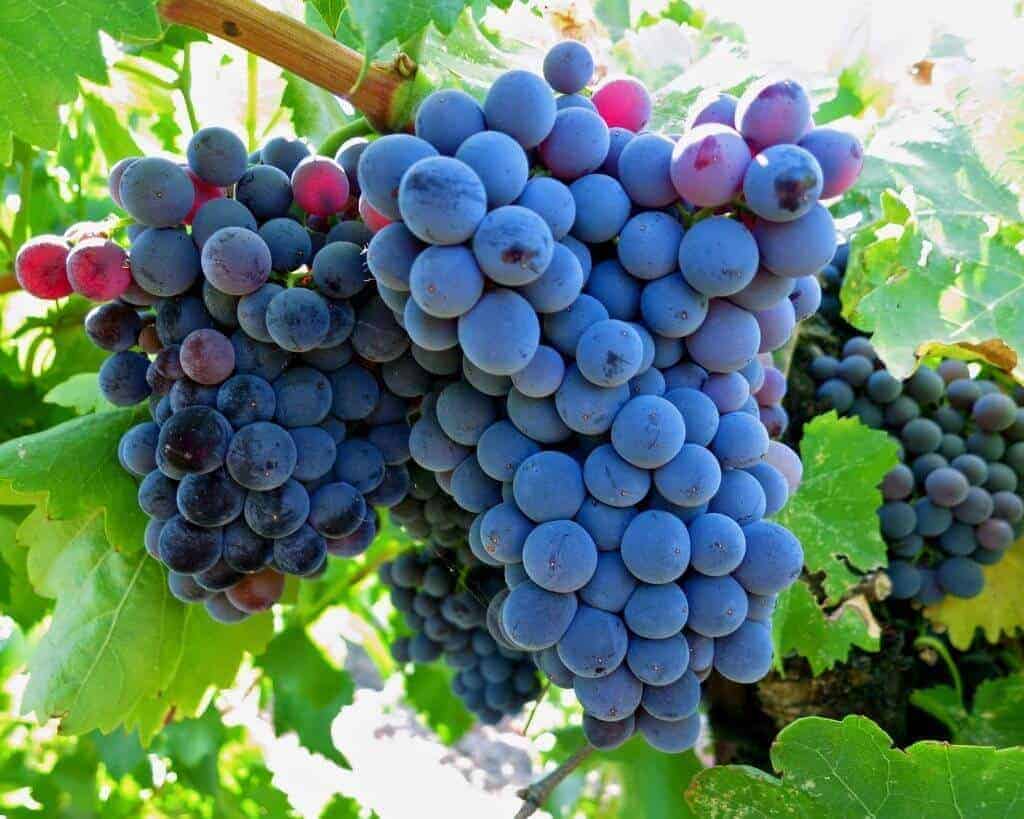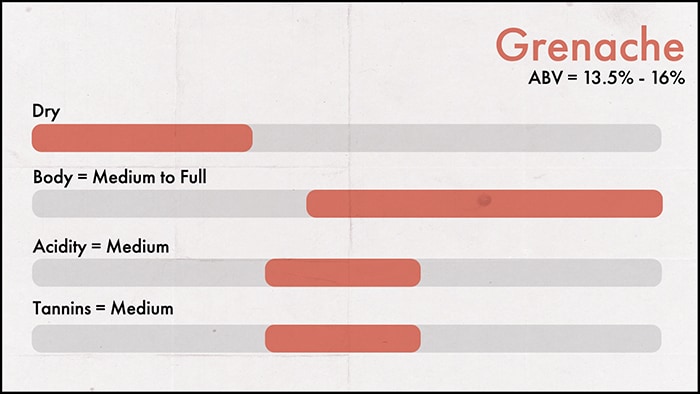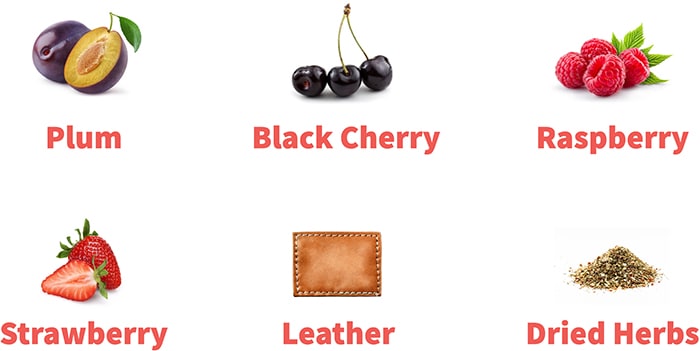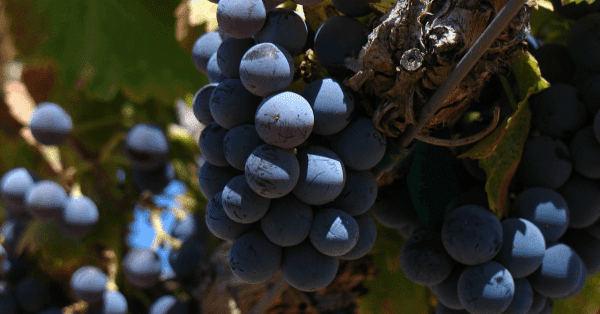Complete Guide to Grenache Wine | Wine 101

With intense black cherry and red berry flavors, hints of white pepper, and an intense alcohol content, Grenache, is a heartwarming wine and sometimes complex wine.
In this guide, we take a deep dive into this wonderful wine. Discover its history and roots, tasting notes, notable regions, some lovely recommendations, and a whole lot more!
Characteristics of Grenache

Grenache, or Garnacha if you’re in Spain, is a trickster, plain and simple. From the outside, its pale red color and aromas of summertime red fruit would remind you of a Pinot Noir.
Take one sip though, and you soon learn that it is anything but subtle. Its bright acidity, rich fruit flavor, and notes of white pepper hide an almost imperceptibly high alcohol content.
When blended, Grenache seamlessly accentuates its companions by adding plush red fruit flavors and an uplifting acidity. When singled out, the balance of fruit and acid make it an impactful varietal that is sure to stand up against all sorts of food pairings.
Grenache Tasting Notes

Grenache is a thin-skinned varietal that will typically be medium in acidity and body. Tannins range from low to medium. Regardless of where it is grown, you can expect aromas and flavors of summertime red fruit, flowers, liquorice, and white pepper.
Getting region specific, the warmer the climate (or the warmer the vintage) the more you can expect notes of cooked red fruit, dried herbs, and cocoa.
While typically aged in neutral oak, warmer climate Grenache is can be age worthy, developing tertiary flavors of caramel and earth over time.
How is Grenache Served?
Grenache is best served at room temperature (60°-68°F), and can be served in a standard red wine glass.
Decanting is not necessary for most younger Grenache wines, but if you’re reaching for an aged bottle, or a classic Grenache blend such as GSM (Grenache-Syrah-Mourvèdre) then consider decanting for about 30 minutes to one hour.
That being said, a few minutes in your glass can often be all the time you need to revive this wine’s plush fruit and floral flavors.



The Grenache Grape
The exact origins of Grenache are still up to some debate, but there is enough evidence to suggest the grape began in either the Italian island of Sardinia (where it is known as Cannonau) or the northern regions of Aragon, Spain.
Since the inception of Grenache several centuries ago, it has quickly migrated to the Rhône Valley of France, where it has gained a reputation for making exceptional blends, most notably in the appellation of Châteauneuf-du-Pape, but more on that later.

Grenache is a temperamental varietal, in that it’s tricky to grow and shape into a well-rounded wine. Due to its high alcohol content, it can often come off as heavy-handed and dull. When it is done right, however, Grenache is smooth, with plush fruit flavors that taste remarkable on the palette.
In addition to the red grape version, Grenache Noir, we also have its white grape counterpart, Grenache Blanc. Grenache Blanc is typically oaked and often possesses flavors similar to Chardonnay, with notes of tropical fruit, butter, and oak spice.
Notable Regions for Grenache
So where does the world's best Grenache wine come from? It's still predominantly an Old World Wine but there are some really exciting New World regions producing amazing Grenache these days too.
France, Rhône
France has more or less adopted Grenache as an essential blending grape in the southern Rhône Valley. By Grenache we mean both Grenache Noir and Grenache Blanc, as both are used as blending grapes, often in the same blend.
While Nothern Rhône makes red wine from only the Syrah grape, southern Rhône utilizes a wide variety of both red and white grapes to make a blend. Grenache is typically the starring player in the most notable appellation of this region, Châteauneuf-du-Pape.
Châteauneuf-du-Pape blends typically command high prices, and are known for being complex, powerful, and rich in flavors of earth and dried herbs. This is in part due to the signature sandy clay soil, which makes for wines with concentrated flavors.
Spain, Priorat
In Spain, Grenache/Garnacha is as likely to be used as a single varietal as it is in a blend with regional grapes such as Tempranillo or Carignan (Cariñena).
In Priorat, Grenache and Carignan are often blended together to create powderful flavors of blackberry, chocolate, and liquorice. These wines are typically full-bodied with great aging potential.
When it comes to the weather, this region is blessed with a moderate Meditteranean climate. Pair this with Priorat’s unique well-draining soil, llicorella, and you have the perfect growing conditions for Grenache.
There was a time where Spain almost lost all of its Grenache plantings due to the Phylloxera aphid outbreak. Thankfully, it has regained its plantings and continues to make exceptional red blends and rosé wines from this grape.
Italy, Sardinia
Quite possibly the birthplace of Grenache (a.k.a. Cannonau), Sardinia is a region known for producing Grenache that is medium-bodied, richly floral, with summertime notes of raspberry and strawberry.
These wines do not necessarily win for quality, but when drunk young, they make for an excellent beach day wine. The regions well-draining soil also makes for consistent wines that can easily withstand the islands warm weather.
Also, residents of Sardinia routinely live to be in their 90s and 100s, so there must be something in the wine, right?
USA, California
In the United States, California takes the cake as the predominant grower of most heat-loving grapes, including Grenache.
While this grape was originally grown as a cheap addition to jug wines, it has in recent decades been grown at lower yields to produce hearty, spicy wines that are often blended in a Rhône style GSM or as a rosé wine.
Expect Californian Grenache to be medium-bodied and have notes of white pepper, dried herbs, cherry, and strawberry jam.
Australia, Barossa
Australia is known for making Grenache that resembles Châteauneuf-du-Pape in its complexity and deep red fruit notes. The Barossa Valley, also like the Rhône Valley, typically blends this grape with their Shiraz, making for a well-rounded blend rich in strawberry, cherry, earth, and white pepper.
In addition to red blends, Grenache can also be found in some of its notorious fortified tawnies.
Grenache Food Pairings
Grenache has all the hallmarks for an excellent food pairing wine. Its medium body and acidity make it a good pairing for most proteins, especially roasted, grilled, or BBQ’d meat.
When coupled with its earthy and spicy notes, Grenache adds complexity to a host of dishes.
3 Awesome Grenache Wines to Try
Keen to explore some great Grenache? Here are some awesome expressions that are worth your consideration.
Under $15 - Bodegas Nekeas El Chaparral Old Vines Garnacha 2019

Produced in the most Atlantic-facing region of Spain, this old vine Garnacha can be expected to have rich and complex flavors of red fruit and white pepper, with a subtle minerality that adds depth and an almost umami-like flavor.
Its firm structure and tannins are rounded out with long-lasting flavor and a delicate finish.
Under $30 - Antonella Corda Cannonau 2020

If you want to taste a pure example of Sardinia’s Cannonau, then this is the perfect bottle for you.
Made with grapes that were handled delicately and aged in untoasted oak barrels, you are only going to get the pure flavor of the grapes, no added spice from the oak.
You can expect softened tannins with intense floral and bright cherry notes on the palette, complimented by a subtle pepper spice laced throughout.
Under $100 - Domaine de la Solitude Chateauneuf-du-Pape Cornelia Constanza 2019

This Chateauneuf-du-Pape blend showcases Grenache as the starring role, with numerous other varietals adding complexity and structure.
You can expect a strikingly smooth wine with intense aromas of red fruit and berries, with chocolatey and delicate spice notes adding richness.
There’s plenty of aging potential with this wine, and you can expect more earth and mushroom notes to develop in the bottle over time.
3 Interesting Facts About Grenache
- Despite Grenache’s growing popularity as an excellent blending grape, it has dramatically decreased in its plantings over the last decade. This is possible due to the removal of subsidies from the EU that allowed for the overproduction of this grape, as well as the increased accessibility of varietals from all over the world, thereby diluting desire for Grenache.
- One of the most notable growing regions for Grenache, Chateauneuf-du-Pape, was France’s first designated wine appellation, created in 1936.
- Some unique growing regions where you can expect to find Grenache include China, Mexico, Tunisia, and Algeria.
